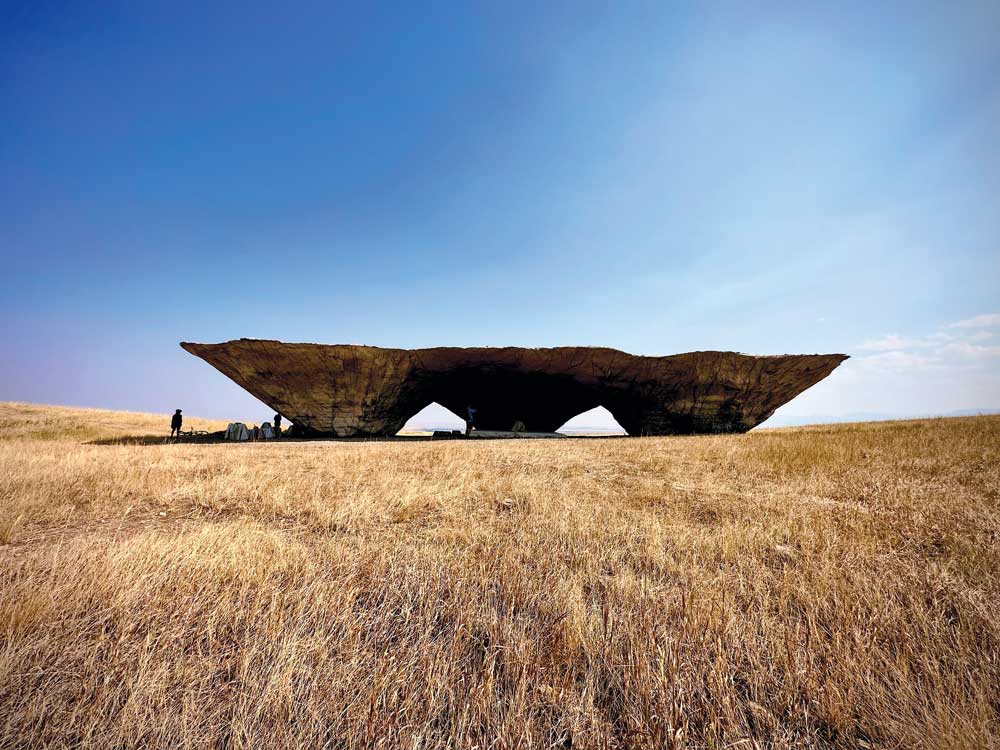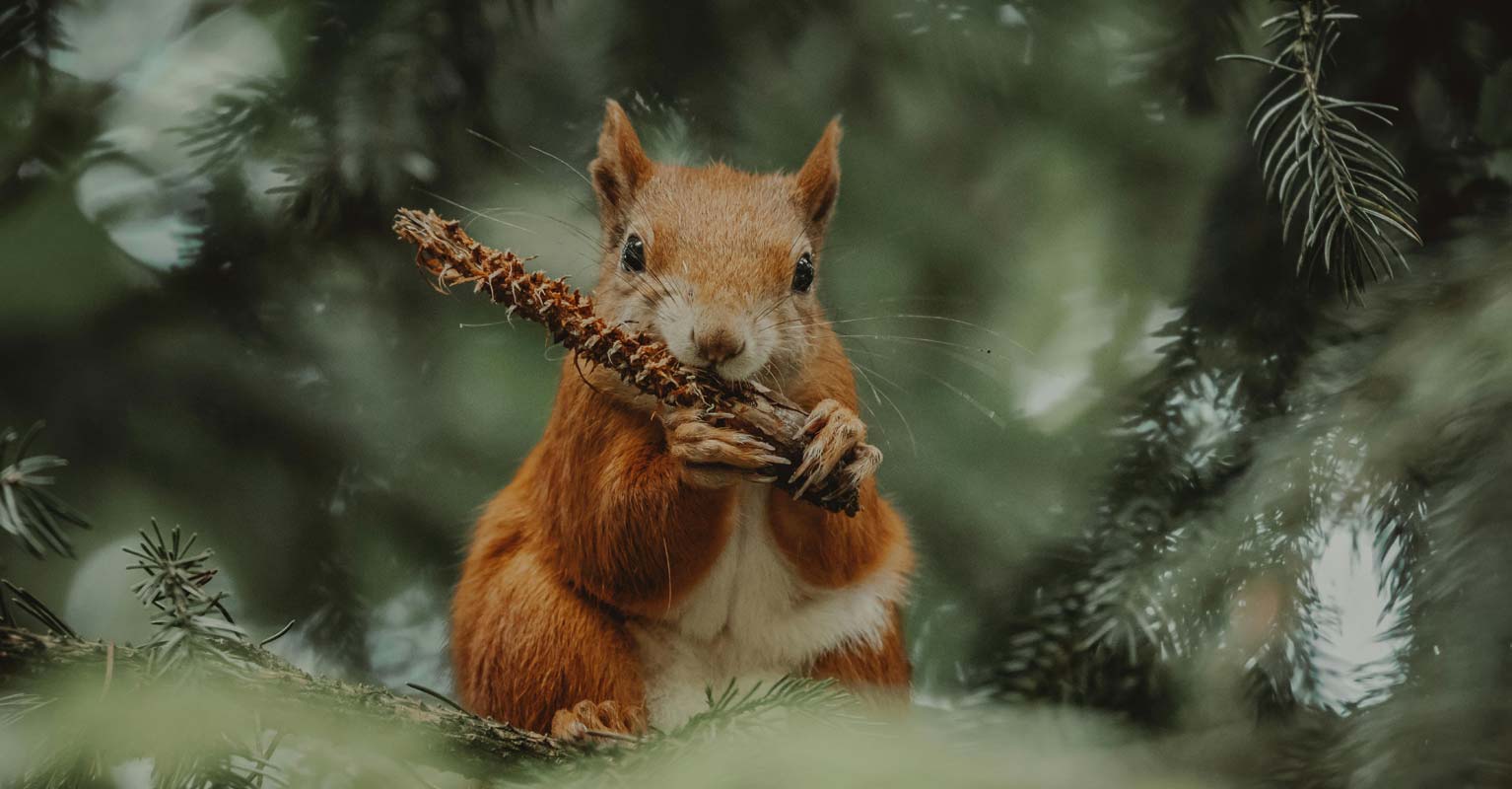Lockhorn CSA manager Andrea Friedrich oversees production in the garden, 1.5 acres adjoining the cider house’s orchard nestled in the foothills of the Bridger Mountains.
Bozeman’s Lockhorn Cider House
Lockhorn Cider House owners Anna Deal and her husband, Glen, always dreamed of planting an orchard. It was part of their long-term plan to supply their downtown Bozeman tasting room with local and specialty apple varieties. So, in 2017—three years after the couple opened the cider house—when their friend offered them 1,500 apple saplings that he’d ordered but wasn’t able to plant, Anna and Glen were given the impetus to move forward with their dream.
“It was a huge undertaking, with all hands on deck,” Anna says. “Our kids, family, and friends all helped out.” They put in 16-hour days for two months straight to get the trees in the ground, build the deer-proof fence and trestle, and set up irrigation. “Initially, we watered the saplings with hoses from our gracious neighbor’s spring while we put in a well and irrigation system. As soon as the last tree was watered, we’d haul the hoses back to the beginning and start again!”
Two years later, the Deals put in another 1,500 dwarf trees and 250 full-sized trees including Bitterroot McIntosh, plums, cherries, and pears.
But it’s Montana, and growing anything can be a struggle due to weather, late frosts, high heat, early frosts, wind, blight, pocket gophers, voles. But Anna looks around at all the old fruit trees in the valley and knows what’s possible for her own orchard; she sees that her trees are growing. “If they can reach that 10-year mark, they will become more resilient.”
So, while they are waiting for their own trees to mature, most of the apples the Deals use for their ciders come from eastern Washington. They are fresh-pressed, delivered within 36 hours, and then fermentation starts right away using a French wine yeast. It takes three to six months of aging to reach the flavor profile the Deals look for in their ciders.
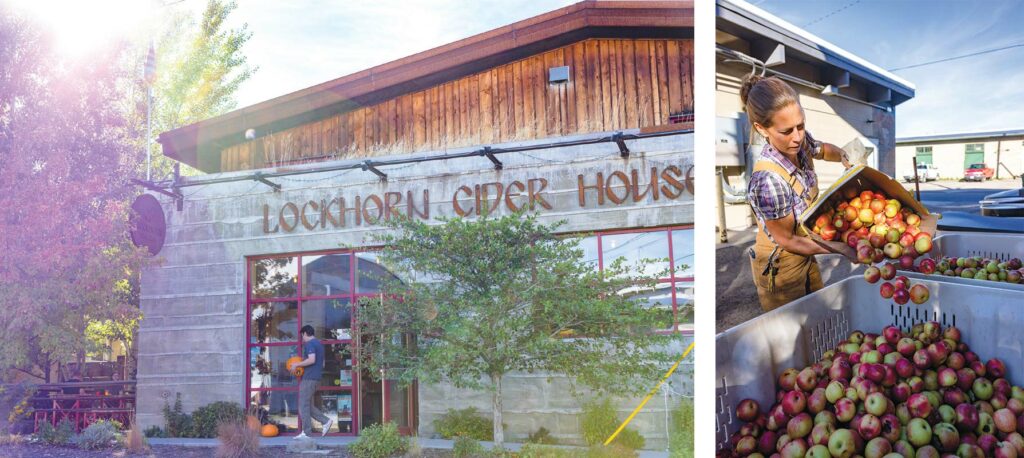
A Community Blend
Community has been a steady theme for Lockhorn. Whether it’s building and planting the orchard, designing the tasting room, displaying local art on the cider house walls, or developing the very cider craft—the Deals have invited their community to participate all along the way.
For the past four years, Lockhorn has produced a specialty community cider called the Bozeman Backyard Blend. Anna says it’s made by “collecting apples from our neighbors and friends,” apples that would otherwise go to waste. Each year between September and October, Bozemanites bring tons of fruit; in the first year Lockhorn received more than 14,000 pounds of apples (which made 1,000 gallons of cider).
Anna loves the energy generated by the Backyard Blend. “People come and tell us about their trees,” she says. “Every apple tree has a story. The homestead heirloom trees, the 100-year-old trees found in a corner of someone’s yard, the Cashman’s ‘baby’ tree that was planted 46 years ago, the Haralred, the Chestnut Crab, the Dolgo Crab— you bring them all together and you get the perfect blend.”
“Community ciders are really special because you’re capturing the various flavors of the fruit unique to the community and the season,” she adds. Beyond the flavor, the blend is steeped in conversations and contemplations from the people who bring in their apples. At Lockhorn, they are honoring and recognizing that the apples, stories, memories, and conversations are all preserved in a blend of cider that can be shared all winter with family and friends.
Lockhorn offers the Backyard Blend from mid-winter (usually in January) until the tap runs out (typically by mid-summer), and they give 10 percent of the profits to three Bozeman nonprofits: Gallatin Watershed Council, Haven, and Bozeman Symphony. Apple donors choose which of the three charities their donation will support. Donors also receive a pint or can of cider for every 25 pounds of apples they give. “People drop off buckets and boxes, truck loads, and bike trailers full of fruit,” Anna says. “Some people have walked away with a whole case of cider, grinning from ear to ear.”
“When our hands are busy, it opens up other parts of our brains we don’t get to use often. We become connected through the earth, through the process, through the conversation.” —Anna Deal, owner of Lockhorn Cider House
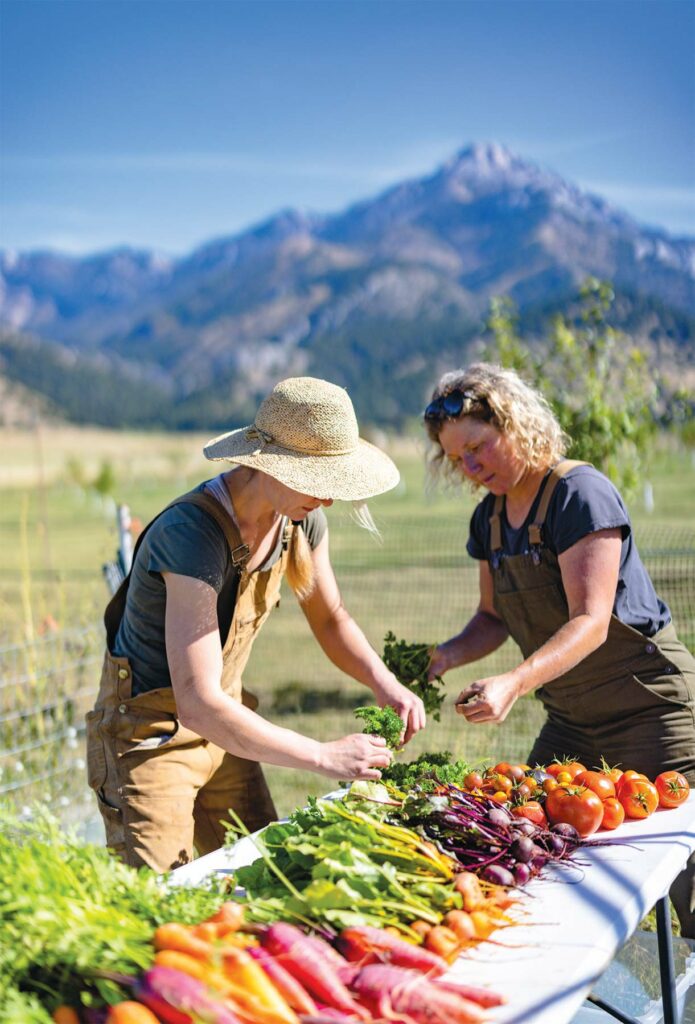
Beyond Cider
But Lockhorn isn’t just serving cider anymore. For the past three years, the Deals have grown a community garden and offered a CSA (community-supported agriculture program) that they pre-sell, using the cider house as their pickup location. This wasn’t originally part of the plan, though. Both the garden and the CSA came about through necessity in the face of dual hardships.
The Deals faced a tragedy in 2020 when Anna gave birth to their fifth child, a little girl they named Rose who was born with a heart condition. She didn’t live very long. At about the same time, our community was being impacted by COVID. Restaurants and bars were closing. There were shortages at the grocery stores. Anna became hyper focused on food. She felt a deep physical need to move and sweat. And she was really worried about her employees: They needed their jobs.
Adam Olsen has been with them from the beginning and was the lead carpenter with Glen when they remodeled the old garage into the cider house in 2013. As the general manager and lead cidermaker, he’s responsible for guiding the team that crafts all the cider on-site at the downtown Bozeman tasting room. Mike Dietz started as a loyal customer and is now a familiar smiling face during all of the local Lockhorn deliveries. Andrea Friedrich, the CSA manager, has been at the garden for two years and at the cider house for seven. She put herself through engineering school while working at Lockhorn. The Deals say that they couldn’t let the staff down, even if the world seemed to be falling apart.
So, the Deals carved out 1.5 acres from the orchard, planted a garden, and began a CSA. They started seeds in the cider house, basically turning it into a greenhouse. “And it allowed us to keep people working,” Anna says.
She talks about how much she loves getting her hands in the dirt and the opportunity to work together as a family. “There’s a natural rhythm to the process of dreaming up the best-laid plans in the winter, prepping the soil and planting the seeds with all the hopes of order and success, wrestling with Montana spring weather, snow and hail and wind, and fighting the weeds and pests.”
Even though some of the “best-laid plans” are thwarted by our Montana climate and wildlife, some aspects of those plans do surprisingly well, depending on the nuance of the season.
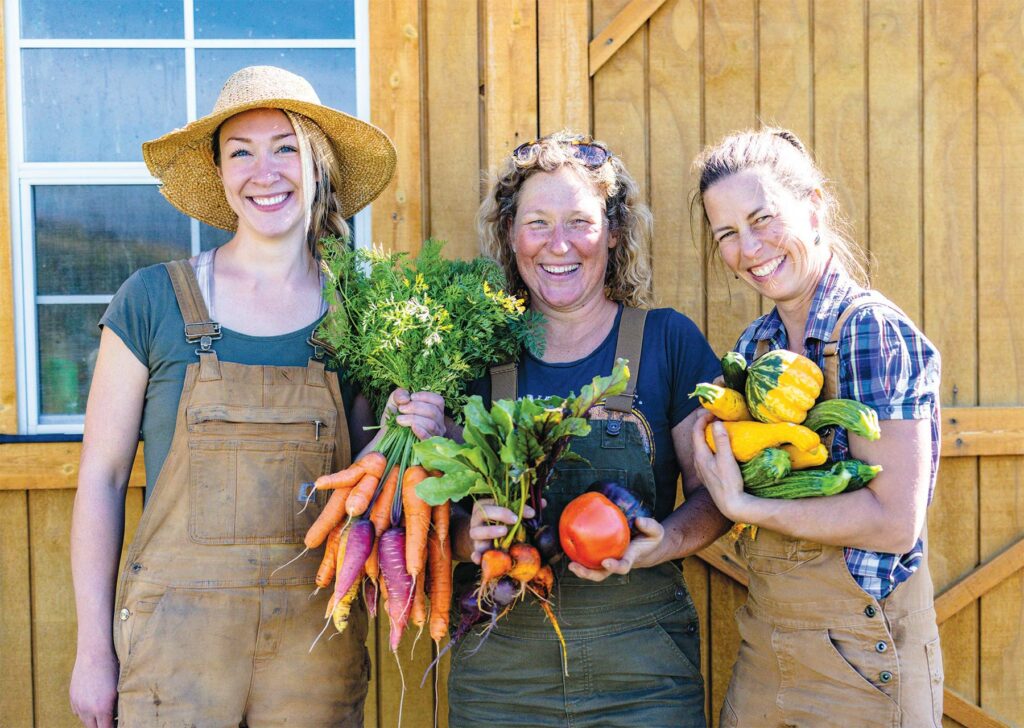
‘Meant to Harvest and Gather’
As Anna so eloquently says, “People are meant to harvest and gather.” She talks a lot about the upside and importance of community spirit. Even during COVID, people could still be together outside. Friends, family, volunteers— people would gather to harvest vegetables and pick apples. Th at harvest becomes a time for real conversation. “When our hands are busy, it opens up other parts of our brains we don’t get to use often,” she says. “We become connected through the earth, through the process, through the conversation. It’s a real lesson in not being in control and submitting to the beauty of it. In the end, it’s really rewarding to see those efforts grow into beautiful, fresh, and flavorful food for our neighbors.”
“It feels really good to grow local food, and we learn more each year about what grows well in our climate,” she adds. “The garden is something I wouldn’t have done if Rose hadn’t died. Every connection I made through the garden has been really positive. It has been a beautiful, positive outcome from that tragedy. The garden really is a labor of love.”


